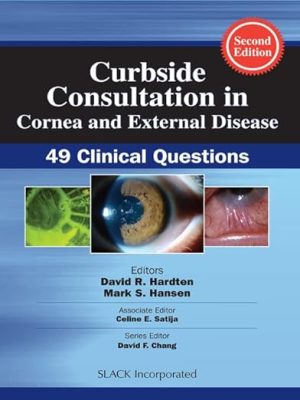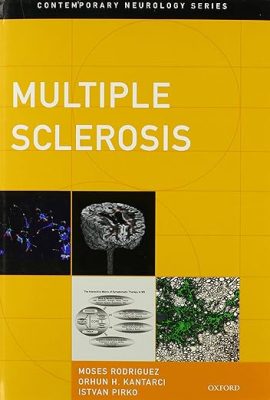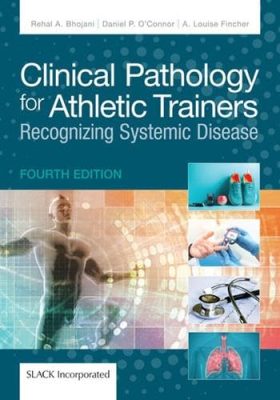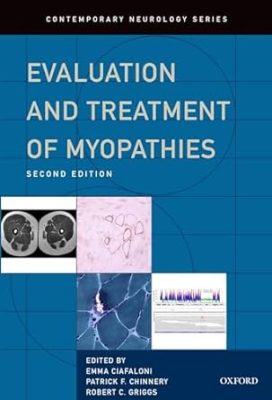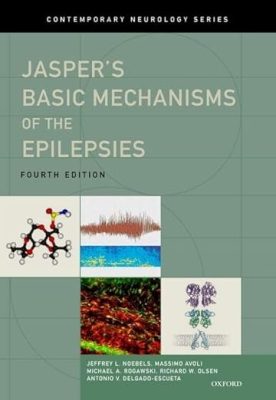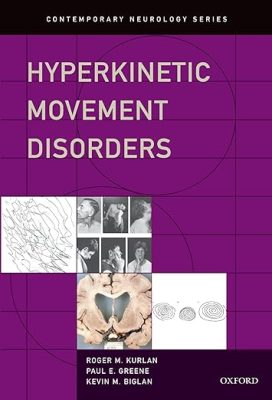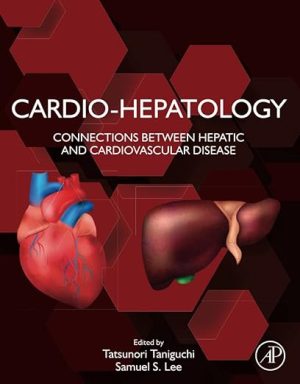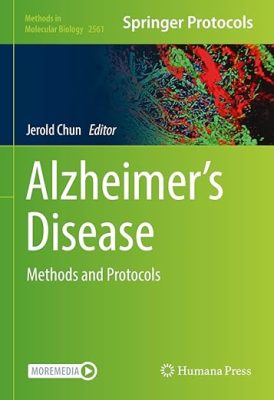Ryan & Sherris Medical Microbiology, Eighth Edition 8th Edition
The most dynamic, comprehensive, and student-friendly text on the nature of microorganisms and the fascinating processes they employ in producing infections disease
A Doody’s Core Title for 2023!
For more than a quarter-of-a-century, this renowned text has helped readers develop a solid grasp of the significance of etiologic agents, the pathogenic processes, epidemiology, and the basis of therapy for infectious diseases. Now, with a NEW four-color design, the book is shorter and more assessable for students! Outstanding pedagogical elements are carried throughout this edition including:
- Over 400 outstanding images with hundreds of tables and illustrations
- Detailed legends under the art so the reader can better understand what’s occurring within the illustration, without having to flip back to the text
- Clinical Cases with USMLE Style Questions
- Margin Notes identifying the “high-yield” must know content in each chapter
- Bulleted Summaries that conclude each chapter
Sherris & Ryan’s Medical Microbiology, Eighth Edition is divided into five parts:
Part I opens with a chapter that explains the nature of infection and the infectious agents at the level of a general reader. The following four chapters give more detail on the immunologic, diagnostic, and epidemiologic nature of infection with minimal detail about the agents themselves.
Parts II through V form the core of the text with chapters on the major viral, bacterial, fungal, and parasitic diseases, and each begins with its own chapters on basic biology, pathogenesis, and antimicrobial agents.
Features and Learning Aids:
- 57 chapters that simply and clearly describe the strains of viruses, bacteria, fungi, and parasites that can bring about infectious diseases (plus one online only chapter)
- Explanations of host-parasite relationship, dynamics of infection, and host response
- A clinical case with USMLE-style questions concludes each chapter on the major viral, bacterial, fungal, and parasitic diseases
- Numerous full-color photographs, tables, and illustrations
- Clinical Capsules cover the essence of the disease(s) caused by major pathogens
- Chapter-ending case questions PLUS a collection of 100 practice questions
- Innovative study aids including boxed narrative Overviews that open each disease-oriented chapter or major section, highlighted Margin Notes pointing out high-yield material for USMLE Step 1 preparation, bulleted lists of Key Conclusions at the end of each major section, a THINK ➔ APPLY feature that randomly inserts thought-provoking questions into the body of the text, and more.
- A set of tables that presents the microbes in context of the clinical infections they produce
Curbside Consultation in Cornea and External Disease: 49 Clinical Questions, Second Edition 2nd Edition
Curbside Consultation in Cornea and External Disease, Second Edition contains new questions and brief, practical, evidence-based answers to the most frequently asked questions that are posed during a “curbside consultation” between clinicians.
Dr. David R. Hardten and associate editors Drs. Mark S. Hansen and Celine Satija have designed this unique reference in which cornea and external disease specialists offer expert advice, preferences, and opinions on tough clinical questions commonly encountered by corneal specialists, ophthalmologists, or residents. The unique Q&A format provides quick access to current information with the simplicity of a conversation between two colleagues. Numerous images, diagrams, and references are included to enhance the text and illustrate clinical diagnoses and treatment plans.
Some of the questions that are answered inside the Second Edition include:
• I have a patient with Fuchs’ Endothelial Dystrophy. Is there anything new to improve her vision?
• What should I do with a young patient with mild keratoconus?
• How can I help a 47-year-old female who uses artificial tears 6 times daily and continues to complain of dry eyes?
• A patient presents with corneal ulcer. What work-up and treatment would you recommend?
• How do I manage a patient that rubbed their eye just after LASIK? What could go wrong?
• What can I offer a patient that sustained eye trauma and loss of iris tissue?
• I have a patient with poor vision after DMEK. What went wrong and how do I get better vision for them?
Curbside Consultation in Cornea and External Disease: 49 Clinical Questions, Second Edition provides information basic enough for residents while also incorporating expert pearls that even high-volume ophthalmologists will appreciate. Cornea specialists, general ophthalmologists, and residents alike will enjoy the user-friendly and casual format and the expert advice contained within.
Multiple Sclerosis (Contemporary Neurology Series) 1st Edition
This latest edition to the ‘Contemporary Neurology Series’ will fill one of the few remaining ‘neurologic gaps’ within the Series. ‘Multiple Sclerosis,’ written solely by Moses Rodriguez, Orhun Kantarci and Istvan Pirko of the Mayo Clinic in Rochester, MN will offer proven, effective treatments for specific presentations and symptoms of multiple sclerosis along with a pathophysiological explanation of why they work. It bridges a needed gap between overly simplistic therapy manuals and basic science texts that discuss human disease only insofar as it mimics what is observed in animal models of the disease in the laboratory. Additionally, it seeks to offer an efficient integrative approach to symptomatic treatment to avoid over-medication and side effects. It discusses the heterogeneous causes of the disease and the need to develop individualized treatments that address the basic pathophysiologic processes that characterize each patient’s disease with the future goal of individualized medicine.
‘Multiple Sclerosis’ covers both the basic research aspects of MS: epidemiology, neuropathology, genetics, and immunology as well as the treatment options associated with the MS patient: sleep, steroids, pharma, neuropsychology, and growth factors (to name a few). ‘Multiple Sclerosis’ will focus on the medical treatment – drug treatment – of MS rather than on physical medicine and rehabilitation (not the author’s strength). The authors will also make ample use of flow diagrams, bulleted points, and tables to help the reader better understand MS and its etiology and treatment.
Clinical Pathology for Athletic Trainers: Recognizing Systemic Disease Fourth Edition
Newly updated with the latest professional content standards, Clinical Pathology for Athletic Trainers: Recognizing Systemic Disease, Fourth Edition provides insight on medical conditions frequently encountered in athletic training. Consistent with the profession’s shift toward the medical model, this Fourth Edition is complemented by the addition of a sports medicine physician’s perspective.
Drs. Rehal A. Bhojani, Daniel P. O’Connor, and A. Louise Fincher have written this new edition to emphasize practical knowledge, clinical skills, and decision-making skills. Incorporating up-to-date standards from the Commission on Accreditation of Athletic Training Education, National Athletic Trainers’ Association position statements, and the latest guidelines for medical conditions of various organ systems, this text reflects the continued growth and evolution of the athletic trainer’s role as a health care professional. It provides comprehensive knowledge that can be adapted to clinical practices, urgent cares, academics, research, and more.
The Fourth Edition includes updated:
- Cases
- Evidence and references
- Position statements
- NATA and professional documents
- Information on assessment, evaluation, and treatment
Included with purchase is a supplemental website with an updated online lab manual.
Perfect for athletic trainers, athletic training students, and other health care professionals working with physically active populations throughout the lifespan, Clinical Pathology for Athletic Trainers: Recognizing Systemic Disease, Fourth Edition is a must-have for any practitioner seeking to develop their clinical skills.
Evaluation and Treatment of Myopathies (Contemporary Neurology Series) 2nd Edition
This new edition of Evaluation and Treatment of Myopathies is written for the clinician who sees patients with muscle disease, or the patient with complaints of pain or weakness of muscle. Like the original, this new edition is divided in to 3 primary sections: Approach to the Patient with Muscle Disease, Specific Myopathies, and General Strategies of Clinical Management, each section providing practical guidance to eliciting key histories and demonstrate findings upon examination. This new edition also provides guidance on the next steps in diagnoses as well as the latest information on pathogenesis, diagnosis, and treatment, in an integrated manner, so as to give trainees, practicing clinicians and others who see neuromuscular disease perspective on how to evaluate and care for patients. New and revised tables, figures, and references are selected and organized to present information of clinical importance to provide the most up-to-date resource on the myopathies.
Jasper’s Basic Mechanisms of the Epilepsies (Contemporary Neurology Series) 4th Edition
H.H. Jasper, A.A. Ward, A. Pope and H.H. Merritt, chair of the Public Health Service Advisory Committee on the Epilepsies, National Institutes of Health, published the first volume on Basic Mechanisms of the Epilepsies (BME) in 1969. Their ultimate goal was to search for a “better understanding of the epilepsies and seek more rational methods of their prevention and treatment.” Since then, basic and clinical researchers in epilepsy have gathered together every decade and a half with these goals in mind — assessing where epilepsy research has been, what it has accomplished, and where it should go. In 1999, the third volume of BME was named in honor of H.H. Jasper. In line with the enormous expansion in the understanding of basic epilepsy mechanisms over the past four decades, this fourth edition of Jasper’s BME is the most ambitious yet. In 90 chapters, the book considers the role of interactions between neurons, synapses, and glia in the initiation, spread and arrest of seizures. It examines mechanisms of excitability, synchronization, seizure susceptibility, and ultimately epileptogenesis. It provides a framework for expanding the epilepsy genome and understanding the complex heredity responsible for common epilepsies as it explores disease mechanisms of ion channelopathies and developmental epilepsy genes. It considers the mechanisms of conditions of epilepsy comorbidities. And, for the first time, this 4th edition describes the current efforts to translate the discoveries in epilepsy disease mechanisms into new therapeutic strategies. This book, considered the ‘bible’ of basic epilepsy research, is essential for the student, the clinician scientist and all research scientists who conduct laboratory-based experimental epilepsy research using cellular, brain slice and animal models, as well as for those interested in related disciplines of neuronal oscillations, network plasticity, and signaling in brain strucutres that include the cortex, hippocampus, and thalamus. In keeping with the 1969 goals, the book is now of practical importance to the clinical neurologist and epileptologist as the progress of research in molecular genetics and modern efforts to design antiepileptic drugs, cures and repairs in the epilepsies converge and impact clinical care.
Hyperkinetic Movement Disorders (Contemporary Neurology Series) 1st Edition
Hyperkinetic Movement Disorders the latest edition to the Contemporary Neurology Series, will cover the signs, the pathophysiology, the genetics (where applicable), and the treatment options of each form of hyperkinetic movement disorder. There is a presentation of clinically-focused information regarding the full spectrum of neurological and psychiatric conditions characterized by involuntary movements.
With Parkinson’s disease as the most common hypokinetic movement disorder, the book expands on other hyperkinetic movement disorders where substantial progress has been made in the understanding of the role of the basal ganglia in the pathophysiology of these hyperkinesia disorders and in motor control, muscle tone, posture, and cognitive processes. Although therapies that target pathogenesis are still lacking, effective management of hyperkinetic movement disorders demands that physicians are knowledgeable about current and novel pharmacological and surgical approaches.
Following background information about how to approach hyperkinetic movement disorders and the neural circuitry underlying them, there are individual chapters that cover tremor, dystonia, Huntington’s disease (and other choreas, athetosis, ballism), Tourette’s syndrome (and other tic disorders), habits, mannerisms, compulsions, stereotypies, myoclonus, drug-induced disorders, Wilson’s disease, hyperkinetic movement disorders with a peripheral trigger and those of unclear origin, and psychogenic movement disorders. Chapters include sections on clinical phenomenology, etiology and pathogenesis and therapy. There are also on-line resources for clinicians and patients to refer to as well.
The experienced authors have specifically selected scientific and other published information that best helps clinicians understand, diagnose and optimally treat hyperkinetic movement disorders. The authors’ approach is comprehensive yet focused and practical with an emphasis on clinical care.
Cardio-Hepatology: Connections Between Hepatic and Cardiovascular Disease 1st Edition
Alzheimer’s Disease: Methods and Protocols (Methods in Molecular Biology Book 2561)
This volume explores the latest techniques used to study the human brain towards understanding Alzheimer’s Disease and related neurodegenerative disorders. Contributed to by world-renowned experts, the chapters in this book are divided into five parts. Part One discusses human post-mortem brain preparations including single-cell isolation and use of specialized imaging. Part Two talks about neural cellular models using primary and human induced pluripotent stem cells to model aspects of the human brain. Part Three details nucleic acid analyses including transcriptomic and somatic genomic changes, and Part Four discusses lipid analyses via mass spectrometry. Lastly, Part Five covers protein analyses, particularly Aβ and Tau. Written in the highly successful Methods in Molecular Biology series format, chapters include introductions to their respective topics, lists of the necessary materials and reagents, step-by-step, readily reproducible laboratory protocols, and tips on troubleshooting and avoiding known pitfalls.
Cutting-edge and thorough, Alzheimer’s Disease: Methods and Protocols is a valuable tool for all researchers who want to expand their knowledge and understanding of this disease and other related dementias.









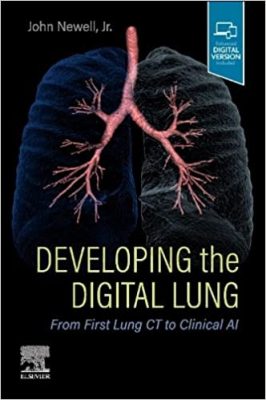 Reflecting recent major advances in the field of artificial intelligence, Developing the Digital Lung, From First Lung CT to Clinical AI, by Dr. John Newell, is your go-to reference for all aspects of applied artificial intelligence in lung disease development, including application to clinical medicine. It provides a unique overview of the field, beginning with a review of the origins of artificial intelligence in the mid-1970s and progressing to its application to clinical medicine in the early 2020s. Organized based on the four stages of development, this practical, easy-to-use resource helps you effectively apply artificial intelligences to lung imaging.
Reflecting recent major advances in the field of artificial intelligence, Developing the Digital Lung, From First Lung CT to Clinical AI, by Dr. John Newell, is your go-to reference for all aspects of applied artificial intelligence in lung disease development, including application to clinical medicine. It provides a unique overview of the field, beginning with a review of the origins of artificial intelligence in the mid-1970s and progressing to its application to clinical medicine in the early 2020s. Organized based on the four stages of development, this practical, easy-to-use resource helps you effectively apply artificial intelligences to lung imaging.
